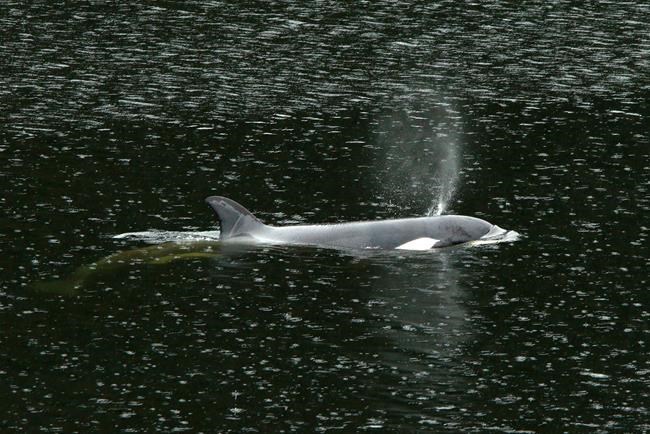ZEBALLOS, B.C. — A "very smart" orca calf trapped in a remote B.C. lagoon managed to dodge a 50-strong rescue team using boats, divers, nets and sophisticated underwater detection equipment in an attempt to save her life on Friday.
Rescue officials said that after the disappointment of the unsuccessful attempt, other capture and transport methods are being considered, including using a seine net and a bigger vessel to snare the two-year-old female.
"This is a very smart animal and we're going to have to look at other options," Paul Cottrell, Fisheries Department marine mammal co-ordinator, said in an interview at the rescue site near Â鶹´«Ã½Ó³»Island village of Zeballos.
"Today didn't work out the way we'd hoped it to," he said. "We have to step it up in terms of our approach and how we're going to help the animal."
Rescuers said they were considering trying to net the orca calf in the lagoon's deep waters, instead of using the net to corral the animal into a large fabric sling in the shallows as they did on Friday.
Ehattesaht First Nation Chief Simon John said in a late briefing that a different boat might be needed to capture the calf in the deeps that it has been reluctant to leave since its mother died three weeks ago in the lagoon, 450 kilometres northwest of Victoria.
“A purse seine (net) is available to us, to actually achieve trying to net it … with that it may take a bigger vessel, so we’re trying to think about the vessel available to us, to make available to the process to actually purse-seine it.”
Such strategy poses risks, both to the calf and rescuers in the water, said Cottrell, but all options were on the table.
“The planning around using a purse seine or a beach seine or a seine in a different method … there’s going to be a lot of planning around that to make sure it’s safe for the animal and also all of us working in that environment,” he said in the briefing. “Whenever you’re working with nets, there’s a risk.”
The rescuers spent Friday trying to direct the calf into a shallow part of the three-kilometre lagoon, so she could be placed in the sling and hoisted onto a transport vehicle and taken to the open ocean.
"It was very promising, however, we weren't able to convince her to move close enough to set out the big seine net to isolate the calf," said Cottrell.
Flat-bottom jet boats circled an area of the lagoon where the rescue team was trying to shepherd the young orca. An Indigenous war canoe was also on the water, its paddlers singing and keeping time with a steady drum beat.
The Ehattesaht First Nation named the young orca kwiisahi?is, or Brave Little Hunter, after she ventured into the tidal lagoon off northwest Â鶹´«Ã½Ó³»Island with her mother last month, via a shallow channel. Tragedy ensued when the pregnant mother stranded on a rocky beach at low tide and died.
John did not directly say when a second rescue attempt could be made, other than "maybe in a couple of days."
The department previously discussed holding the young orca in an ocean net pen when she was caught, then freeing her when members of the mother's family were nearby, but now it says she will be released directly into open water where it's thought she is most likely to encounter her family pod.
Cottrell said he was hopeful that if the calf could be freed, it would find its way back to its family of Bigg's killer whales.
“There’s a very high likelihood in a short amount of time there will be some sort of interaction or reunion and that’s what we’re hoping for," he said.
Veterinarian Martin Haulena from the Â鶹´«Ã½Ó³»Aquarium told the briefing that the calf was in "not a great situation by any stretch" but there were no critical health concerns, and she was swimming well enough to make dives lasting seven or eight minutes in the deeps of the lagoon.
A statement by John, the Ehattesaht First Nation council and the rescue team said they made the decision to stand down Friday's rescue bid after the young orca "simply decided she was not ready to be moved."
The statement said the team would regroup after this initial attempt and start planning next steps.
“We’re kind of looking at other options now going forward, realizing that this animal is very smart,” Cottrell said. “It’s adapting to our tactics and we’re going to try a different tactic going forward.”
The rescue attempt had started at 5 a.m. on Friday, triggered by weather that dawned cool and clear after days of heavy rain.
Previous efforts to persuade the calf to swim back through the shallow channel proved futile.
This report by The Canadian Press was first published April 12, 2024.
Dirk Meissner, The Canadian Press



